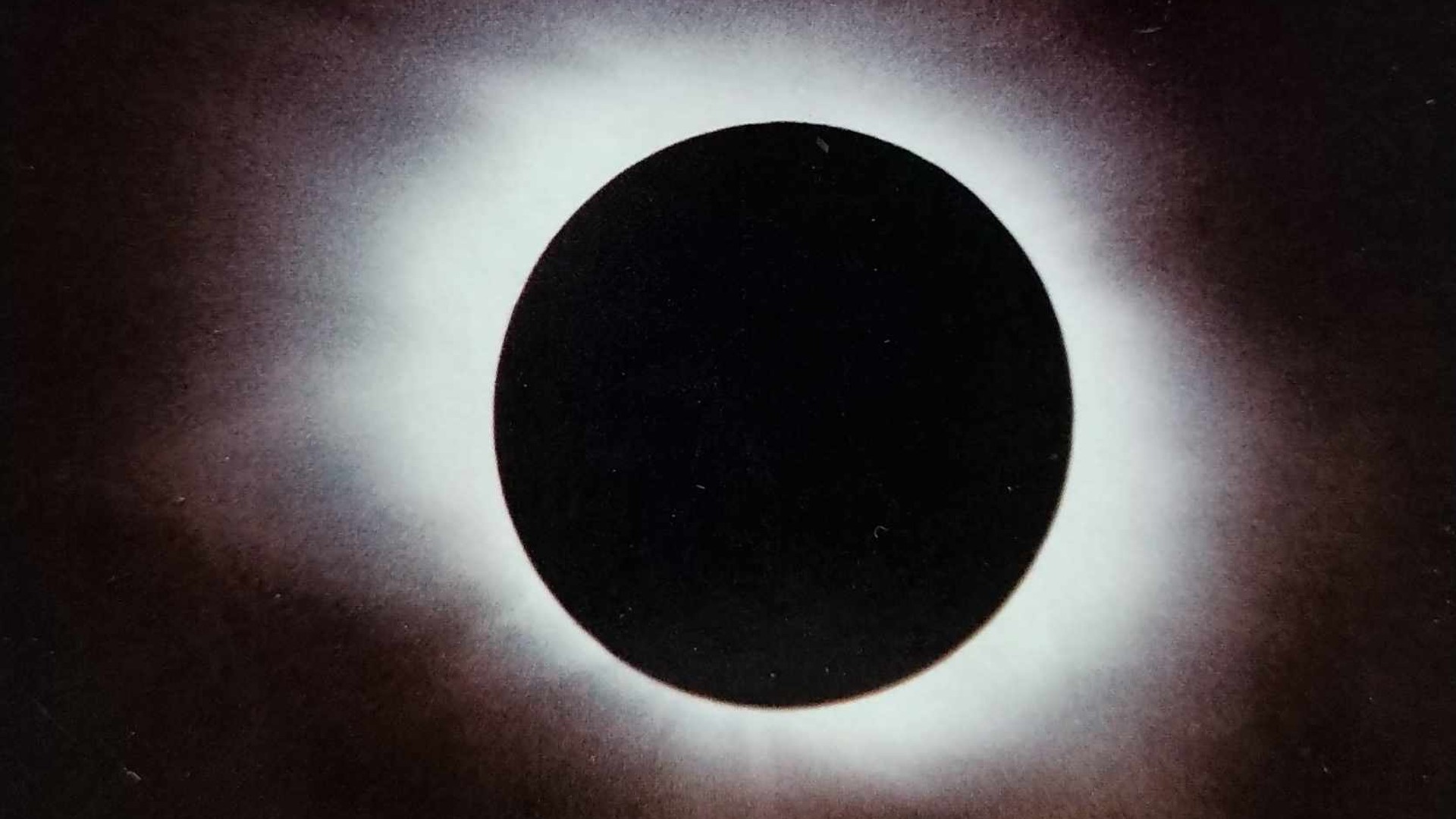
Fifty years ago on June 30, 1973, one of the longest total solar eclipses of modern times took place.
It was an event that made headlines all around the world, because historically, there were very few total solar eclipses that matched the long duration of this particular event. Astronomer Dr. Charles H. Smiley (1903-1977) of Brown University, who at that time was a renowned expert in the field of solar eclipses noted that: "There are 2,495 solar eclipses between July 1, 1098 (Julian Calendar) and June 24, 2150 (Gregorian Calendar). Of these, the three with the longest duration of totality, are the eclipses of June 8, 1937, June 20, 1955, and June 30, 1973. Thus, over an interval of almost 1,052 years, the 1973 event ties the 1937 eclipse for second place."
Total solar eclipses occur when the sun becomes fully blocked out by the moon. While these celestial events happen a handful of times each year, they are rare for any one particular location. On average, a total solar eclipse will occur at any one specific location on Earth once every 375 years. In 2023, an annular solar eclipse will sweep a 'ring of fire' across North, Central and South America. The following year in 2024, North America will see a total solar eclipse being hailed as the "Great American Eclipse."
Related: Solar eclipses 2023: When is the next solar eclipse?
The path of moon's shadow
The path of totality for the June 30, 1973 eclipse, began at sunrise near the border of Guyana with northernmost Brazil, crossed Suriname, and then moved out over the Atlantic Ocean. The moon's dark shadow (the umbra) then passed over the northern islands of the Cape Verde group, nearly 520 miles (830 km) west of Senegal, before crossing northern Africa from Mauritania to Kenya and a corner of Somalia. Crossing the equator, and heading southeast over the Indian Ocean, the shadow lifted off of the Earth's surface at sunset about 1,000 miles (1,600 km) east of Madagascar.
The maximum duration of totality — 7 minutes 04 seconds — was in the Sahara Desert, not far from where Algeria, Mali and Niger meet.
The absolute maximum duration for a total eclipse is 7 minutes 31 seconds, just 27 seconds longer than what would be available in 1973. As such, amateur and professional astronomers were going to make the most of it!
Get the Space.com Newsletter
Breaking space news, the latest updates on rocket launches, skywatching events and more!
Why so long?
The reason for the unusually long duration of the '73 total eclipse was primarily due to the distances of the sun and moon relative to Earth. Because the moon revolves around the Earth in an elliptical orbit, and the Earth likewise revolves in an elliptical orbit around the sun, the distances of the moon relative to the Earth and the Earth relative to the sun can vary.
As it turned out, at the time of new moon on Saturday, June 30, 1973 (11:40 UT), the moon was only about 12 hours past that point in its orbit where it was closest to Earth (perigee); 222,310 miles (357,773 km). And just four days later, at 14:55 UT on July 4th, the Earth arrived at aphelion, the farthest point in its orbit, relative to the sun; 94,536,056 miles (152,141,035 km) away.
In terms of size as seen from Earth, the disk of the moon appeared nearly 8 percent larger than the disk of the sun. In addition, the umbral shadow cast by the moon passed chiefly over the tropics just north of the equator. Since the Earth rotates fastest at the equator, this meant that the ground speed of the moon's shadow would be slowed as it swept across the Earth.
So, we had a larger-than-normal moon passing in front of a smaller-than-normal sun, resulting in a very long total eclipse!
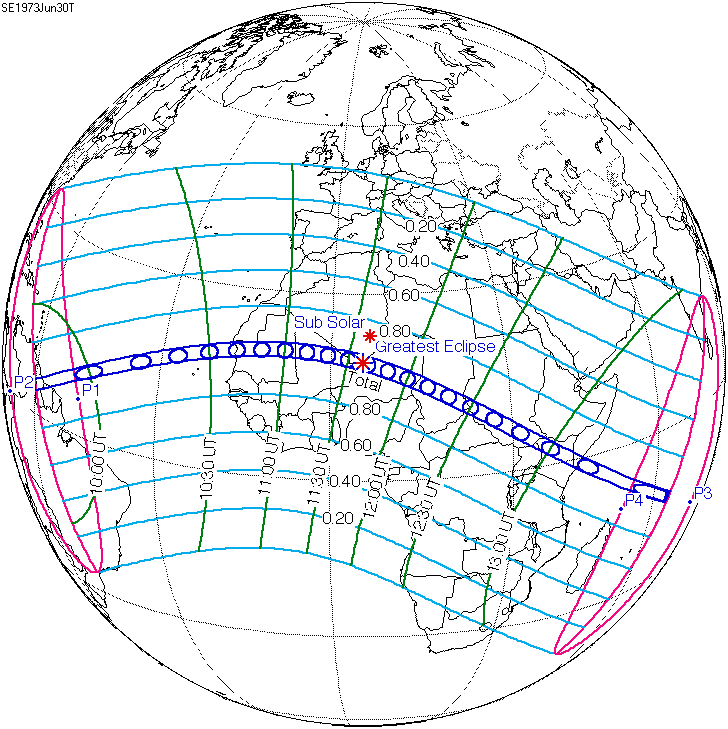
The great celestial road show: By sea
From one end of the totality track to the other were numerous tours and expeditions organized on land, sea and air. Near the beginning of the eclipse track in Suriname, the sun had just risen and was low to the horizon. Under broken cloud cover, many were unable to see the eclipse, but for others in and around the capital city of Paramaribo, fortuitous holes in the clouds allowed views of the corona and diamond ring effect before and after totality.
For about half of its length, the total eclipse track lay over the open waters of the Atlantic and Indian Oceans. As a result, there were an unprecedented number of oceangoing expeditions. At least seven ships, sailing from five countries, carried about 3,500 eclipse chasers to successful views of the darkened sun.
The first ship to experience totality was the Cunard Adventurer, stationed in the mid-Atlantic. Although clouds initially had the upper hand, the sun broke into clear blue skies about halfway through the partial phases. One tiny cloud quickly passed in front of the sun during the 4.5 minutes of total eclipse; hardly interfering with the view for the 600 passengers who had gathered on deck for the big show.
The Adventurer's larger sister ship, the 45,000-ton SS Canberra, carried over 1,900 passengers and on eclipse day was situated about 300 miles (500 km) west of Nouakchott, the capital of Mauritania.
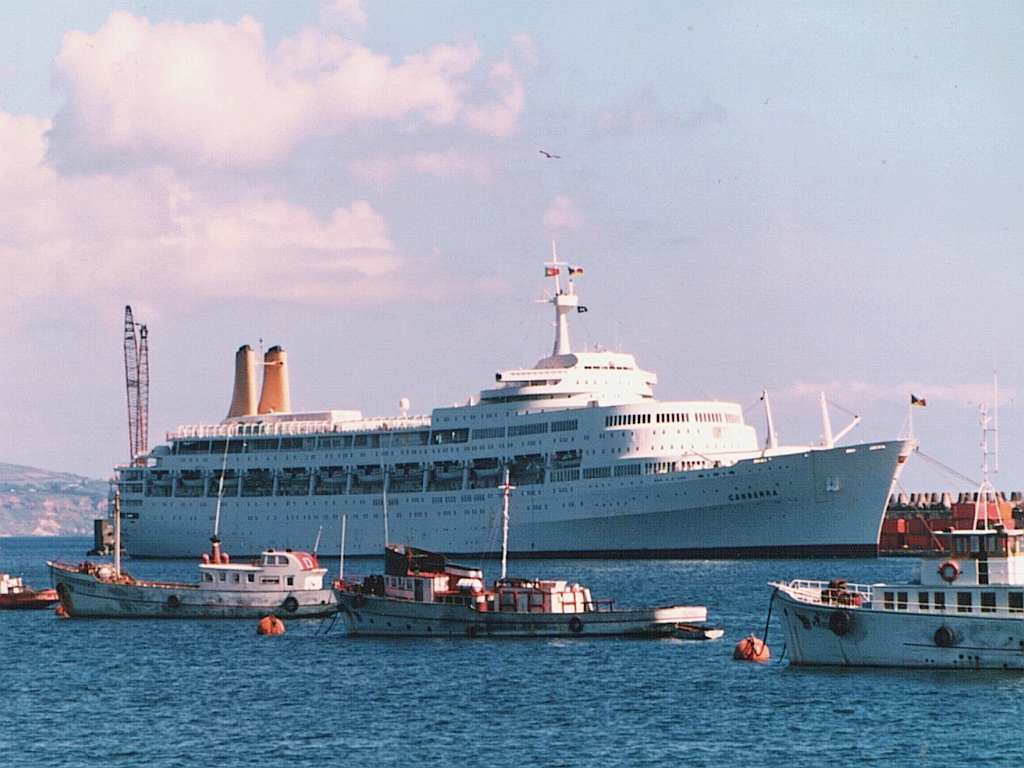
Early on eclipse morning there were many grim faces, as an unanticipated overcast covered the entire sky. But within a few hours of the start of the eclipse, the cloud cover began to dissipate and by totality the skies were cloud-free. Airborne dust from off of the Sahara gave a slight milkiness to the sky, but hardly interfered with the 5.5 minutes of totality.
One passenger on board was famed science writer, Dr. Isaac Asimov (1920-1992), who later wrote about his experience in his autobiography, "In Joy Still Felt" (Doubleday & Company, Inc., 1980):
"The sight of the total eclipse was wonderful. I was excited enough to be shouting wildly at the moment of (total) eclipse. One exclamation was, 'Yes, that's it. That's it. That's the way it's supposed to look,' as though I was congratulating the cosmic director who was running the show. The other, was when the brighter stars began to be visible. 'That proves it. The stars do shine in the daytime.' The whole thing was a spectacular success."
Two vessels were from the Soviet Union, the Estonia and a research vessel, the Professor Viese; the latter shot meteorological rockets from the deck of the ship during the eclipse.
By land
The shadow then swept across the African continent. Because of transportation and supply problems, many gathered at favored sites in Mauritania, Chad and Kenya. In Mauritania, however, where a four-year drought had taken a severe toll on animals and humans alike, eclipse watchers were subjected to air temperatures ranging from 120° to 135°F (49° to 57°C) and frequent wind-blown dust.

One major expedition — not a tour — was assembled by Educational Expeditions International (EEI) and was led by Dr. Donald H. Menzel (1901-1976), former director of the Harvard College Observatory, and a team of distinguished solar eclipse astronomers. Those who were accepted as participants were to be assigned the role of hard-working research assistants, willing to accept the challenges of bivouac living, extremes of climate and other hardships, all in order to try and solve specific research problems related specifically to the sun.
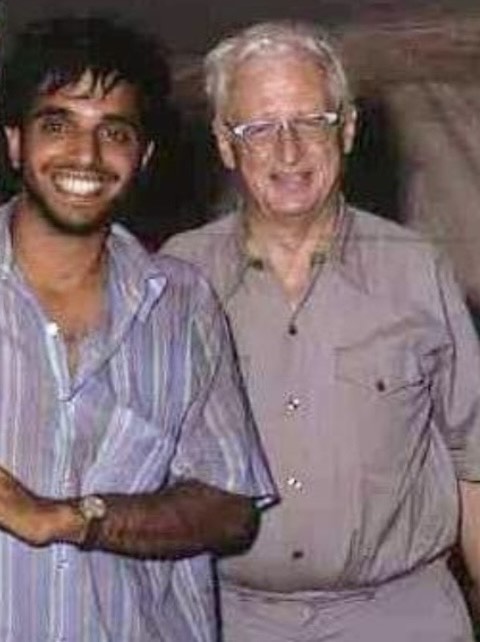
Probably the largest group was the 220 members of the Amateur Astronomers Inc. (AAI) expedition, led by the assiduous amateur astronomer and entrepreneur, Roger Tuthill (1919-2000), based near the town of Akjoujt. Amateur astronomer Dennis Cassia notes: "There were pretty heavy dust storms in the area prior to the eclipse. In fact, on our flight from Dakar to Akjoujt, our plane lost an engine."
On eclipse morning, a great cloud bank hid the sun until 20 minutes after the moon began to cross in front of it. Thereafter, skies slowly cleared, though remained rather hazy. In spite of this, the corona's streamers extended four solar radii to the east and three radii to the west during the 6.2 minutes of totality. Venus was easily visible, Saturn with some difficulty. "We didn't have excellent transparency," adds Cassia, but it was good enough."
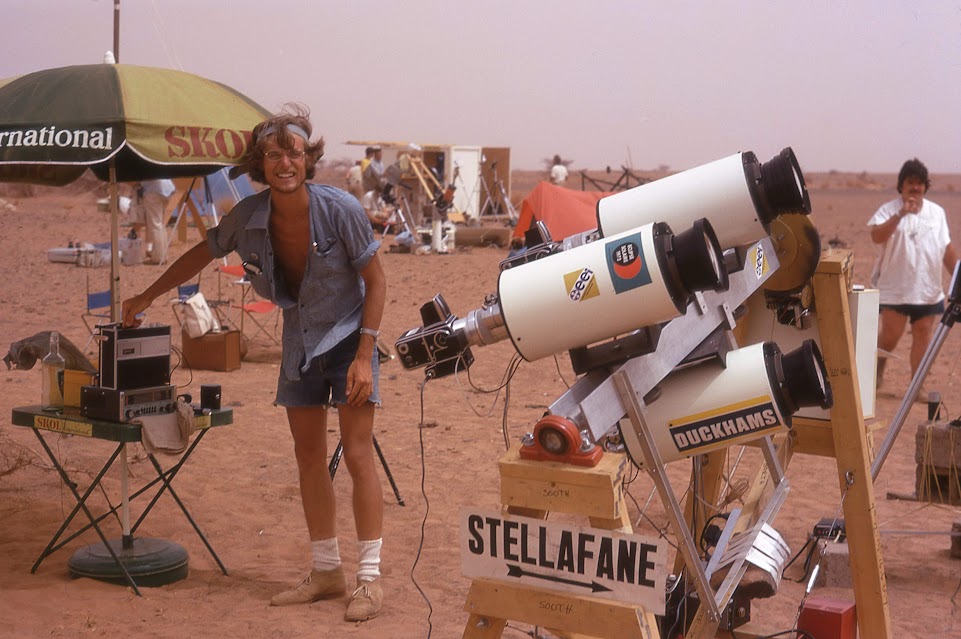
From the air
This eclipse also offered an excellent opportunity for extending the duration of totality by "racing the moon's shadow." Between 11:30 and 11:45 UT the umbra moved only 338 miles (544 km) over the ground; hence an airplane would need to travel at only 625 knots to remain in the shadow for 15 minutes. Indeed, 42 U.S. Air Force and civilian personnel made eclipse observations from an NC-135 jet (similar to a Boeing 707) flying at 37,800-feet over Niger, and extended the duration of totality to 12.1 minutes.
Meanwhile 15 astronomers, engineers and flight crew were onboard a French-built supersonic Concorde 001, flying at Mach 2.05, modified for the eclipse with rooftop portholes and observation equipment.
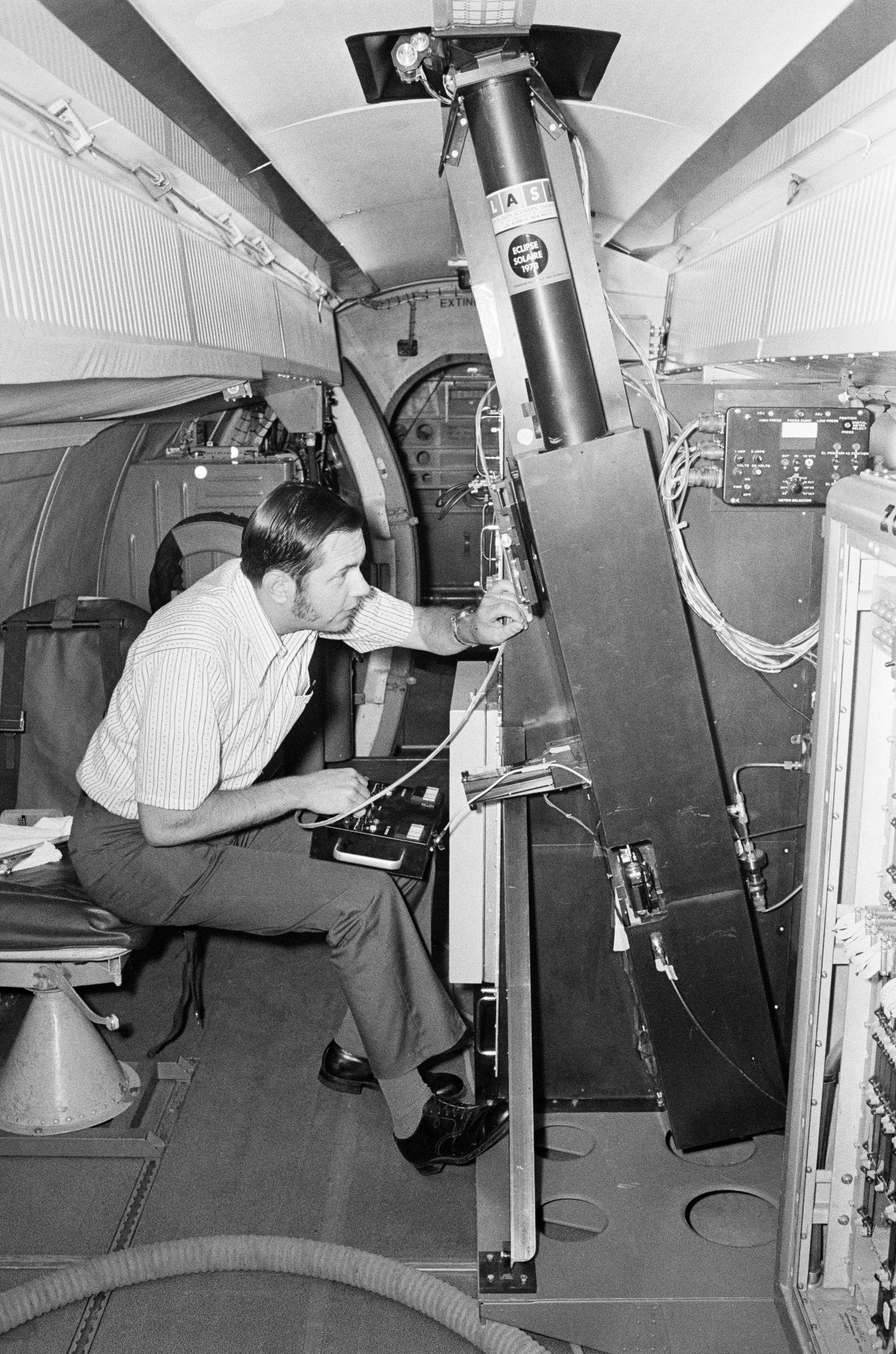
Intercepting the moon's shadow over Mauritania and leaving it at Chad, the Concorde achieved an unprecedented 74 minutes of totality at an altitude of 53,000 feet.
To this day, this is the longest totality that has ever been observed.
Looking ahead
Many, of course, are eagerly looking forward to the upcoming total solar eclipse on April 8th, 2024, which will cross parts of Mexico, the United States and Canada. In terms of duration of totality, this will be a longer-than-average eclipse. Typically, total solar eclipses last less than 3.75 minutes but in the upcoming eclipse, totality will attain nearly 4.5 minutes over parts of Mexico and southern Texas.
But what about exceptionally long events such as what was experienced in 1973? The next total eclipse that will exceed 7 minutes (7 minutes 14 seconds) will take place on June 25th, 2150. Unfortunately, most of the totality path will pass over the open waters of the Pacific Ocean.
How about for the United States? In his book "Morsels IV" (Willmann-Bell, Inc, 2007), Jean Meeus searched from the year 1 to the year 3000. He did not find any totalities that exceeded 7 minutes, however on August 12th, 2045, the totality track will run from California and Nevada to Alabama and Florida with a maximum duration of 6 minutes 06 seconds near Port St. Lucie. As for Europeans, on June 20th, 2327, an exceptionally long totality of 6 minutes 21 seconds will take place just off the coast of Portugal.
Joe Rao serves as an instructor and guest lecturer at New York's Hayden Planetarium. He writes about astronomy for Natural History magazine, the Farmers' Almanac and other publications.
Join our Space Forums to keep talking space on the latest missions, night sky and more! And if you have a news tip, correction or comment, let us know at: community@space.com.

Joe Rao is Space.com's skywatching columnist, as well as a veteran meteorologist and eclipse chaser who also serves as an instructor and guest lecturer at New York's Hayden Planetarium. He writes about astronomy for Natural History magazine, Sky & Telescope and other publications. Joe is an 8-time Emmy-nominated meteorologist who served the Putnam Valley region of New York for over 21 years. You can find him on Twitter and YouTube tracking lunar and solar eclipses, meteor showers and more. To find out Joe's latest project, visit him on Twitter.
-
billslugg From the article:Reply
"The maximum duration of totality — 7 minutes 04 seconds — was in the Sahara Desert, not far from where Algeria, Mali and Niger meet.
The absolute maximum duration for a total eclipse is 7 minutes 31 seconds"
I witnessed the total eclipse of July 11, 1991 from a spot on the centerline in Baja, California. Duration there was 6 minutes 47 seconds. Clear weather, it was awesome.









